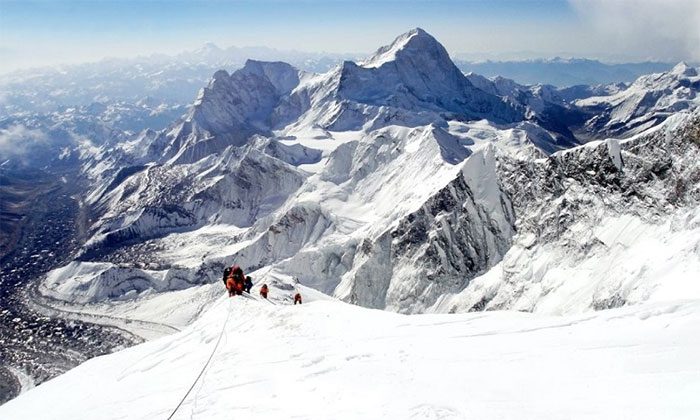Geologists estimate that a mountain on Earth could rise more than 1.6 kilometers higher than Mount Everest if it were formed by volcanic processes.
Sixty million years ago, when the Eurasian tectonic plate collided with the Indian tectonic plate, a mountain range was formed. Because these tectonic plates have similar densities and do not sink, the earth and rock had to be forced upward. Today, the Himalayas contain the highest mountains on Earth, with Mount Everest standing at an elevation of 8.8 kilometers above sea level. Following Everest is K2, which rises over 8.6 kilometers above the Earth’s surface.

Everest is the highest mountain in the world. (Photo: Live Science).
Theoretically, a mountain could be a bit taller than Everest, according to Gene Humphreys, a geophysicist at the University of Oregon. However, it would first have to overcome several challenges in its development. For instance, due to Earth’s gravitational force, any rock mass that forms into a mountain will begin to sag, similar to how a loaf of dough slowly collapses when placed on a table. Continuous processes like erosion also prevent mountains from growing too high. Glaciers, massive blocks of ice that move slowly, particularly impact the “shaping” of mountains.
Earth scientists compare glacial erosion to a saw, as they are very effective at wearing down mountain slopes. According to Humphreys, glacial erosion tends to create steep mountains that are prone to landslides. The effects of erosion and gravity mean that the larger the mountain, the greater the pressure, and the higher the tendency to collapse. While Mount Everest could potentially be taller, its southern slope appears unstable, which could lead to landslides.
However, there are still ways for a mountain to grow taller than Everest, even by up to 1.6 kilometers, but certain conditions must be met. First, it needs to form from volcanic processes rather than continental collision. Volcanoes, like the Hawaiian Islands, grow during eruptions. Lava flowing from a volcano gradually cools into layers, causing the volcano to rise higher. Ultimately, for the mountain to continue developing, it requires a continuous supply of magma to be pushed up, allowing lava to erupt, flow down the slopes, and cool. This volcanic process is precisely how the tallest volcano in the solar system, Olympus Mons on Mars, formed. At a height of 25 kilometers, Olympus Mons is tall enough to pierce through the atmosphere of the red planet, according to Briony Horgan, a planetary scientist at Purdue University in Indiana.
Olympus Mons can reach such heights because Mars lacks tectonic plates, the large crustal fragments that govern Earth’s geological processes. Olympus Mons forms above a hotspot, a deep magma chamber that continually erupts. Similar to the Hawaiian Islands, the erupting lava flows down the slopes and cools into new rock layers. However, even though the Hawaiian Islands also form above a hotspot, the Pacific tectonic plate is continuously moving, so the islands do not stay above the hotspot long enough for the volcanoes to grow as large as Olympus Mons.
But even colossal mountains like Olympus Mons have limits. According to Horgan, if the volcano is still active, it is likely nearing the end of its development cycle. This is because the pressure needed to continue pushing magma to the top of the mountain may not be stable enough to overcome other opposing forces, such as the height of the mountain and the gravitational pull of Mars itself. “You can imagine a volcano as a pipe pumping magma. If it is too large and too high, there won’t be enough force to push the magma through,” Horgan explains.


















































